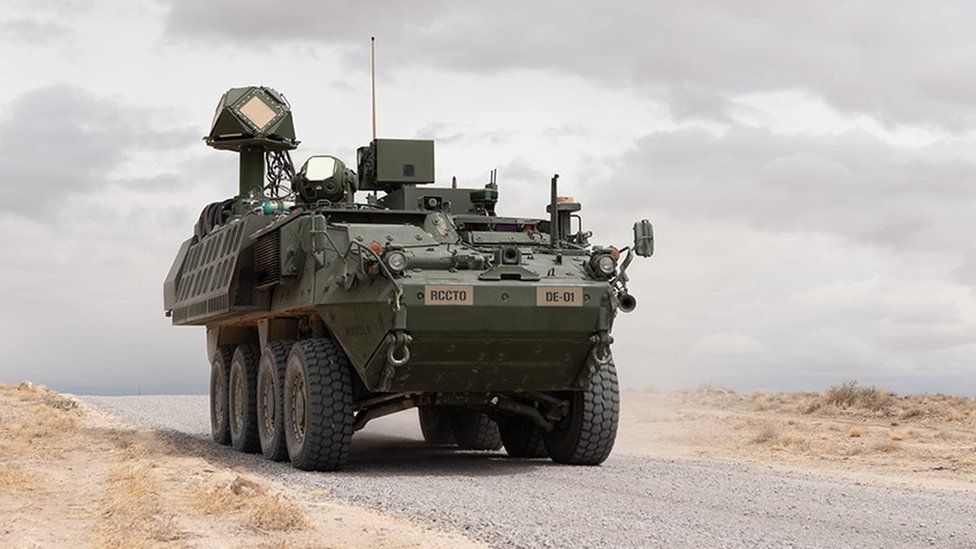ARTICLE AD BOX
 Image source, US Army
Image source, US Army
A 50 kilowatt-class laser mounted on a US Army Stryker vehicle
A European hub for high-energy laser weaponry is to be based in Livingston, Scotland, a big defence firm has said.
Raytheon UK said the "advanced laser integration centre" would open next year and would help meet growing demand for laser weapons designed to destroy small attack drones.
The firm said the war in Ukraine had highlighted the threat they posed.
The centre will focus on the testing, fielding and maintenance of defensive high-energy laser (HEL) weapons.
Raytheon's anti-drone lasers are small enough to be fitted to military vehicles.
Drones, rockets and mortars
Last year, Raytheon was awarded a demonstrator contract to provide a high-energy laser weapon system to the UK Ministry of Defence, to be installed on the UK Wolfhound land vehicle, the company said.
It claims that "demand is spiking for cost-effective lasers" able to defeat "asymmetric" threats from drones, rockets and mortars.
Small commercial drones, which the weapons are designed to defend against, have demonstrated their military effectiveness in Ukraine, directing and correcting artillery fire and, in some cases, being modified to carry explosives.
Speaking from the Farnborough Airshow, Annabel Flores, Raytheon's president of electronic warfare systems, told the BBC some of the additional interest and demand for the technology was as a result of how drones had been used in the conflict.
"The thought is coming into how do you defend against them effectively, making our ongoing conversations with customers much deeper and much more pronounced," she said.
HEL weapons had advantages she added, particularly the cost per shot.
While military ordnance can be very expensive, drones and quadcopters are in the £84 range, she said.
Once connected to a power supply, she said, the system could keep running.
However, the weapons do not resemble the lasers of popular sci-fi, as their drone-destroying beams are invisible.
"Hollywood makes it look very, very interesting and very dramatic. And this is a little different. It can look a little anti-climatic," Ms Flores said.
Raytheon says the laser system has 20,000 hours of operational use, but Ms Flores would not be drawn on whether the system had been "used in anger" yet.
Image source, Raytheon UK
Image caption,The site of the planned hub
Initially the number of jobs created by the new centre is likely to be small, but could increase to potentially "hundreds of jobs".
That will depend on many factors of course, but the company believes that high-energy lasers could make up as much as 30% of of future air defence infrastructure.
While the firm would not be drawn on how much it would ultimately invest - citing pending financial results - it has already spent about £20m developing the Livingston site, the BBC understands.
It said the announcement was a "statement of faith" in both the UK's engineering sector and the important nature of the technology.

 2 years ago
49
2 years ago
49








 English (US) ·
English (US) ·